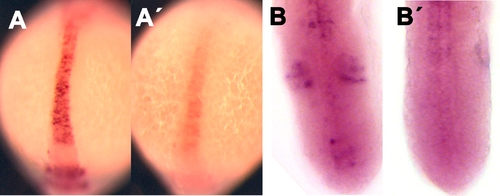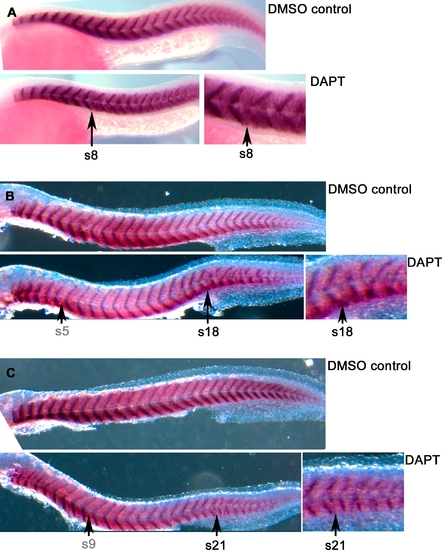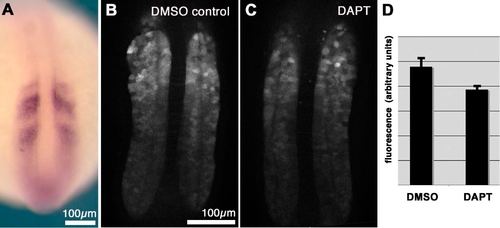- Title
-
Notch Signalling Synchronizes the Zebrafish Segmentation Clock but Is Not Needed To Create Somite Boundaries
- Authors
- Ozbudak, E.M., and Lewis, J.
- Source
- Full text @ PLoS Genet.
|
DAPT Treatment Blocks Notch Signalling Rapidly EXPRESSION / LABELING:
|
|
Blocking Notch Signalling Causes Somite Boundary Defects after a Long Delay EXPRESSION / LABELING:
|
|
DAPT Treatment Disrupts Synchronized Oscillations of her1 within 3–4 h EXPRESSION / LABELING:
|
|
Effect of Loss of Notch Signalling on the Expression of a GFP Reporter for her1 EXPRESSION / LABELING:
|
|
Overactivation of the Notch Pathway by NICD Causes Somite Boundary Defects After a Long Delay EXPRESSION / LABELING:
|





